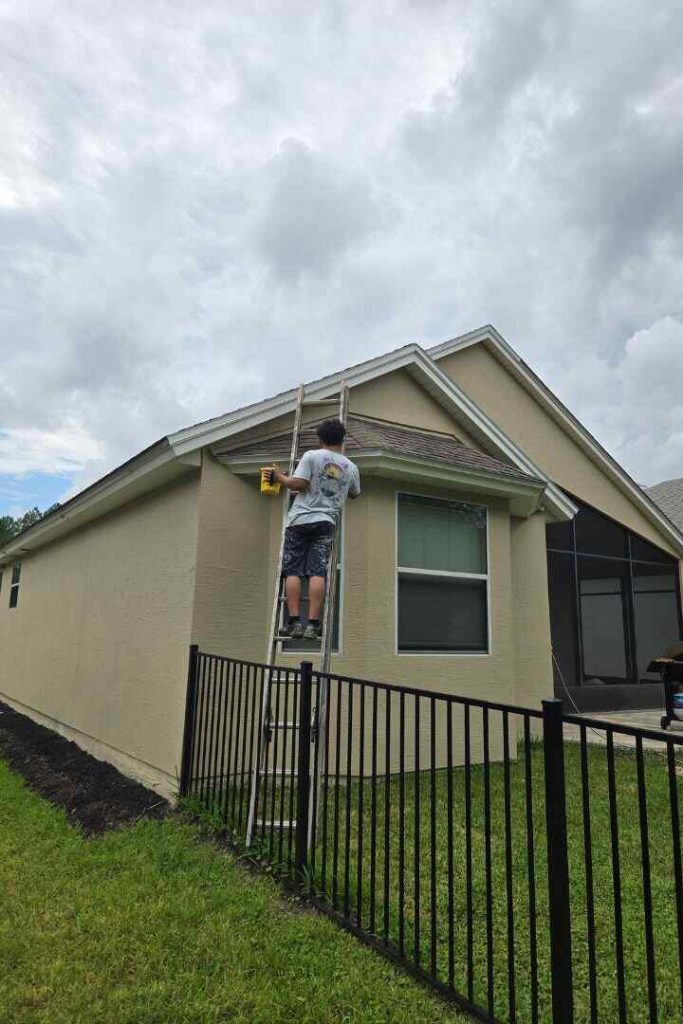When the exterior paint of your home begins to show signs of wear and tear, it can make your entire property look tired and neglected. If you’re in St. Augustine, FL, and have noticed fading, peeling, or chipping paint, it’s time to give your home the fresh look it deserves. House painters in St. Augustine FL, know that the right techniques can transform your home’s exterior, restoring its beauty and protecting it from the elements. Whether you’re a homeowner looking to revamp your space or a professional in the painting industry, here are some crucial tips for reviving faded or peeling exterior paint.

Assessing the Damage
The first step in tackling any paint job is assessing the extent of the damage. Peeling paint can be a result of several factors, including moisture, sun exposure, or improper application. It’s important to inspect the condition of your current paint and determine whether the entire surface needs to be repainted or if localized touch-ups will suffice.
If the peeling is limited to small sections, sanding and patching those areas may be enough. However, if the paint is peeling off in large sheets or there are signs of mildew, mold, or water damage, it’s best to strip the paint entirely before applying a fresh coat.
Surface Preparation is Key
Proper surface preparation is critical for achieving a lasting finish. If the paint on your house is peeling, it’s essential to remove all loose, flaking paint before applying new layers. This will help ensure that the new paint adheres properly and provides the coverage your home needs.
- Scrape off Peeling Paint: Use a paint scraper or a power sander to remove any loose or flaking paint. For tougher areas, you might need to use a paint stripper. Make sure to wear protective gear like gloves and goggles, especially when using harsh chemicals.
- Clean the Surface: Dirt, dust, and grime can prevent new paint from adhering correctly. Wash the walls with a power washer or a garden hose with a strong spray attachment. Be sure to let the surface dry completely before moving to the next step.
- Repair Any Damages: Look for cracks, holes, or dents that could affect the finished look. Use a good-quality exterior spackle or caulk to fill any gaps. Once the filler has dried, sand it smooth to ensure a seamless finish.
Sanding the Surface
Sanding is a vital part of preparing your home’s exterior for fresh paint. It helps smooth out rough areas, removes remnants of old paint, and allows the new paint to adhere more effectively.
- Use Coarse Sandpaper First: For heavily peeling areas, start with a coarse grit sandpaper (around 60 to 80 grit). This will help strip the old paint and smooth the surface. Be careful not to gouge the wood or substrate.
- Finish with Finer Sandpaper: After the initial sanding, switch to a finer grit (around 120 to 150 grit) to ensure a smooth and even surface. This step is crucial for achieving a professional-looking finish.
- Clean the Surface Again: After sanding, dust off the surface thoroughly. Any leftover dust can affect the paint’s adhesion and create a rough finish.
Choosing the Right Paint
Selecting the right paint for your exterior is vital for longevity and durability. The paint you choose should be able to withstand the unique conditions of St. Augustine, FL, where high humidity and sun exposure can take a toll on the exterior of your home.
- Pick the Right Type of Paint: Latex-based paints are generally more flexible and resistant to cracking, making them a great option for exterior surfaces. If you’re working with wood, opt for a paint that is designed for wood surfaces to prevent issues like moisture absorption and warping.
- Consider the Finish: A high-gloss finish will be more resistant to dirt and easier to clean, but can highlight imperfections in the surface. Satin or eggshell finishes are often a good balance, offering both durability and a smooth appearance.
- Weather Resistance: In St. Augustine, where the weather can be unpredictable, look for paints with UV protection to prevent fading from the sun and moisture resistance to avoid peeling due to rain.
Applying the Paint
Once you’ve prepped the surface and selected the appropriate paint, it’s time to start painting. The method of application can significantly impact the outcome.
- Use High-Quality Brushes and Rollers: For the best finish, invest in high-quality brushes and rollers. Brushes are ideal for cutting in edges and painting trim, while rollers can cover larger areas more efficiently.
- Apply Multiple Coats: For optimal coverage and durability, apply at least two coats of paint. Make sure the first coat is completely dry before applying the second. This allows each layer to bond properly, resulting in a smooth, uniform finish.
- Avoid Painting in Extreme Weather: While it might be tempting to paint when it’s sunny, the heat can dry the paint too quickly, causing streaks and an uneven finish. Similarly, avoid painting when it’s too cold or when rain is expected, as moisture can interfere with paint adhesion.
Don’t Forget the Trim and Details
While the focus is often on the walls, the trim and other details are just as important for the overall look of your home. This includes window frames, doors, shutters, and any architectural details that add character to your house.
- Prep the Trim Properly: Sand and clean the trim thoroughly before painting. Because trim is usually made from different materials, such as wood, PVC, or metal, you’ll need to choose a paint that works for the specific material.
- Use a Steady Hand for Clean Lines: For a professional look, use painter’s tape to create clean lines around trim and edges. Take your time and be patient with the application.
Keep Up with Regular Maintenance
Once the paint is dry and your home’s exterior looks refreshed, it’s important to maintain it regularly to prolong its life.
- Inspect Annually: Check for signs of damage, peeling, or fading every year. If you catch issues early, you can address them before they require extensive work.
- Touch Up Damaged Areas: If you notice small areas where the paint has chipped or peeled, perform touch-ups right away. It’s easier to fix small issues than wait until they spread.
- Wash the Exterior: Regular cleaning can help prevent dirt and grime from accumulating and affecting the paint’s appearance. Use a gentle cleaning solution and a soft brush or sponge to avoid damaging the paint.
Why Choose Affordable Actions?
Reviving faded or peeling exterior paint is a crucial investment for the long-term maintenance and aesthetics of your home. With the right techniques and attention to detail, you can ensure that your home’s exterior looks vibrant and stays protected against the harsh Florida climate.
Affordable Actions, a trusted name among house painters in St. Augustine, FL, offers expert services that cater to both homeowners and businesses looking to improve their curb appeal. Whether you need a full exterior makeover or just touch-ups, our skilled team is ready to handle the job with precision and care. Why choose Affordable Actions? We are committed to delivering quality results on time and within budget, ensuring that your home’s paint not only looks fantastic but also stands the test of time. Reach out to us for all your exterior painting needs and see the difference for yourself!

